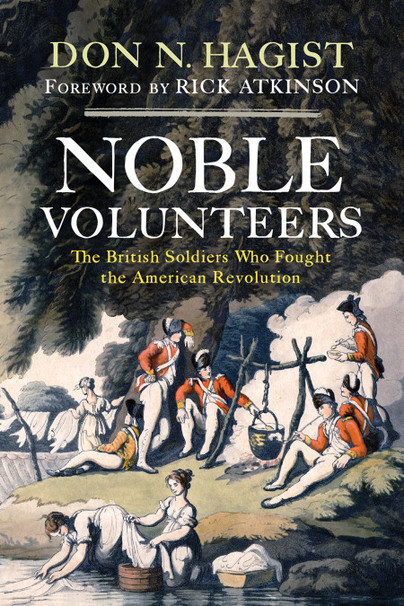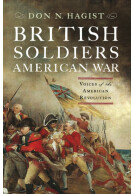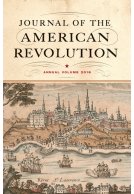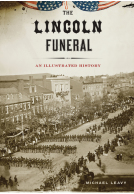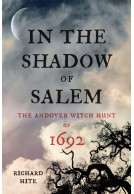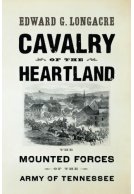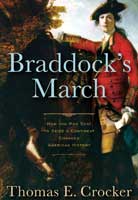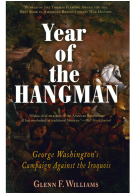Noble Volunteers (Hardback)
The British Soldiers Who Fought the American Revolution
Imprint: Westholme
Pages: 392
Illustrations: 20 halftones
ISBN: 9781594163494
Published: 25th November 2021
(click here for international delivery rates)
Order within the next 49 minutes to get your order processed the next working day!
Need a currency converter? Check XE.com for live rates
Redcoats. For Americans, the word brings to mind a occupying army that attempted to crush a revolution against king and country. For centuries these soldiers have remained hidden despite their major role in one of the greatest events in world history. There was more to these men than their red uniforms, but the individuals who formed the ranks are seldom described in any detail in historical literature, leaving unanswered questions. Who were they? Why did they join the army? Where did they go when the war was over? In Noble Volunteers: The British Soldiers Who Fought the American Revolution, Don N. Hagist brings life to these soldiers, describing the training, experiences, and outcomes of British soldiers who fought during the Revolution. Drawing on thousands of military records and other primary sources in British, American, and Canadian archives, and the writings of dozens of officers and soldiers, Noble Volunteers shows how a peacetime army responded to the onset of war, how professional soldiers adapted quickly and effectively to become tactically dominant, and what became of the thousands of career soldiers once the war was over. In this historical tour de force, introduced by Pulitzer Prize winner Rick Atkinson, Hagist dispels long-held myths, revealing how remarkably diverse British soldiers were. They represented a variety of ages, nationalities, and socioeconomic backgrounds, and many had joined the army as a peacetime career, only to find themselves fighting a war on another continent in often brutal conditions. Against the sweeping backdrop of the war, Hagist directs his focus on the small picture, illuminating the moments in an individual soldier’s life—those hours spent nursing a fever while standing sentry in the bitter cold, or writing a letter to a wife back home. What emerges from these vignettes is the understanding that while these were “common” soldiers, each soldier was completely unique, for, as Hagist writes, “There was no ‘typical’ British soldier.”
The first part of this book, A Peacetime Army Prepares for War, begins by describing the tensions that existed between British soldiers and the citizens of the American colonies, before examining the many and varied reasons why men chose to enlist, the training of new recruits and preparing them for war by practising the loading and firing of their flintlock muskets and how to maintain their formation during rapid movements.
Arthur Harman, Miniature Wargames
The second part, The Wartime Army, consists of x chapters, each of which covers a different aspect of the British Army’s experience during the American War. The first chapter, Evident Supremacy Even in Woods, describes how the troops adapted to war in America. The next deals with recruiting for the American War. The third describes the soldiers’ living conditions on transport ships to America, when quartered in towns and in the countryside on campaign. Then there is a chapter devoted to rations, disease and off-duty activities. The remaining chapters cover plundering, recruiting for global war, bounty money, wages, rewards and promotion. ,
The third and final part, Ending Careers, Ending the War, begins by describing the experiences and escapes of British soldiers taken prisoner by the rebels; the transfer of fit men into other units, and those unfit for campaigning into garrison battalions, when their own regiments returned to Britain; the creation of flank battalions of light infantrymen or grenadiers; the shipping of invalids home for discharge, and death. The final chapter, Long and Faithful Service, explains how some men were discharge with grants of land in the remaining British colonies (modern day Canada), while others who had returned to Britain claimed pensions.
Twenty half-tone illustrations are distributed amongst the text, including photographs of a surviving recruiting poster; details of age and height distributions and nationalities from inspection returns; a page from a punishment book; lists of trades of soldiers who appeared before a pension examination board; a discharge form, and examples of one soldier’s signature and another’s mark. There are also reproductions of contemporary prints showing scenes of military life. Modern line drawings by Eric H. Schnitzer show a soldier drafted from the 12th Light Dragoons into the 20th Foot, still wearing his cavalry coat; a soldier of the 9th Foot on campaign in 1777; a drummer of the 55th Foot, and a prisoner of the 47th Foot.
There are no maps, which is not unreasonable, given the focus of the book.
Forty-six pages of endnotes, a fourteen-page Selected Bibliography and a ten-page index conclude the book.
This is an excellent book that uses the relatively few available primary sources – when compared to the Peninsular War – to rescue the British Army that fought the American rebels from the stereotypes of automata in elaborate uniforms, led by aristocratic incompetents, depicted in films such as Revolution and The Patriot.
Wargaming with model soldiers involves many compromises over matters such as groundscales and limiting intelligence of the enemy but using models rather than cardboard counters reminds us that the wars we study were fought by human beings. Reading this book increases our understanding of the men we portray in miniature on our tabletops and our ability to frame appropriate rules to reflect their morale.
About Don N Hagist
DON N. HAGIST is managing editor of the Journal of the American Revolution. An expert on the British army in the American Revolution, he is the author of many books and articles, including Noble Volunteers: The British Soldiers Who Fought the American Revolution (Westholme 2020), The Revolution’s Last Men: The Stories Behind the Photographs (Westholme 2015), and British Soldiers, American War: Voices of the American Revolution (Westholme 2012).







